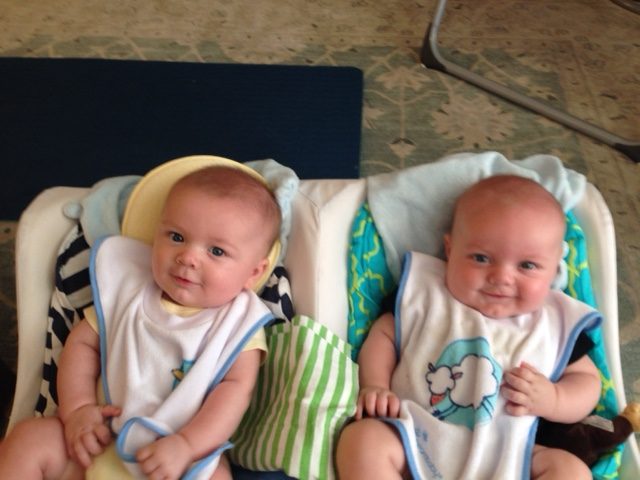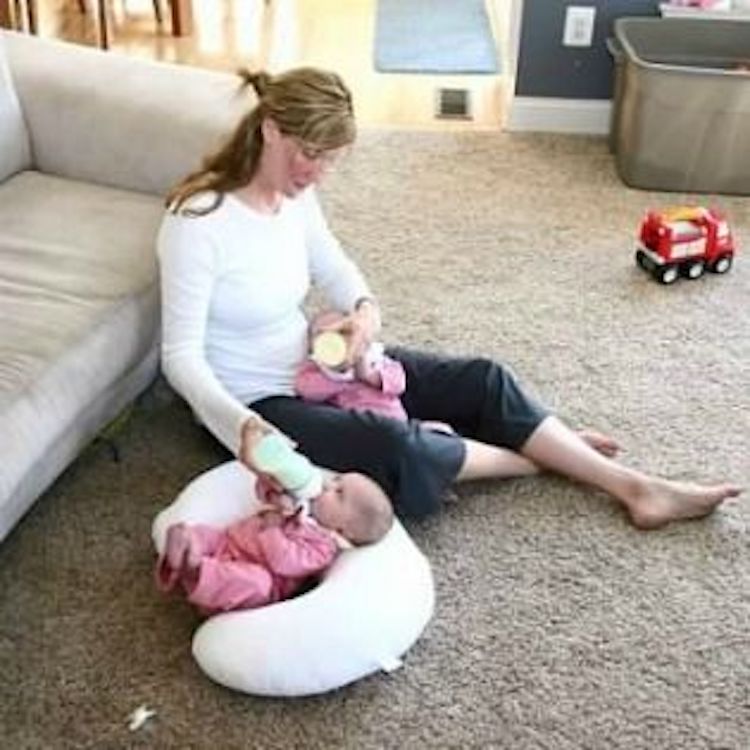So You’re Having Twins! Proven Support and Fun Facts
Every first time parent has questions and for expecting parents of twins, the need for information can be…well, doubled! In this blog, So You’re Having Twins! Proven Support and Fun Facts, we share how to book in-home twin care classes, interesting info and education so you can be confident once your newborns arrive.
So You’re Having Twins! Proven Support: In-Home or Virtual Education for the Whole Family
If you’re wondering how to feed both babies at the same time, what gear you need or how you get twins on the same schedule, this Twins Baby Basics class is for you! Our Nurses and Night Nannies come to your home to share all the skills and tips you’ll need to care for your twins with confidence.
What You’ll Learn:
- Safe Sleep and minimizing the risk of SIDS for twins and triplets
- tandem feeding
- getting twins on the same schedule
- understanding what is developmentally appropriate for preemies
- diapering – swaddling – soothing
- the best gear for twins
- what parents can expect in the postpartum phase
- setting up the nursery for twins
Your nurse also stays on call to text, email, call or FaceTime to answer any questions you might have once the twins arrive.

So You’re Having Twins! Proven Support and Fun Facts – Parent FAQ’s Answered
How do you get twins on the same sleep schedule?
Feeding is the anchor to a baby’s schedule. When we talk about “getting babies on a schedule” however, what we are really saying is that we’re following baby’s natural growth cycle and cues. When baby is just born their feeding may be on demand, since that’s what they did in the womb. Then the feeding cycle will naturally stretch to 2 hours, then 3 and then eventually 4 hours. When we feed twins at the same time, it follows that their bodies will be ready for sleep at the same time.
There is no magic to this; it is just a matter of always offering milk/formula at the same time until after a few days the babies “hungry times” will synch. (It is much easier than it sounds).
On a side note, parents of twins who have been on the same schedule for years will tell you that potty training is so challenging because toddlers usually have to use the potty at the same time! Makes sense since they are eating and sleeping at the same time!

What do you do when you just start to feed one baby and the other twin is crying from hunger?
It’s inevitable that 1 baby will cry while you’re tending to the other. That is life with more than 1 child. The best way to minimize these situations though is to just get used to feeding both babies at the same time. For bottle feeding, this means offering the twins’ bottles at the same time.
For nursing moms, setting yourself up on a cozy bed with both babies to tandem nurse is the answer. Nursing while babies lay “football style” allows your hands to be free. This way you can burp each baby while the other is nursing. Keeping 2 bassinets next to your bed means you don’t even have to get out of the bed unless you want to. It takes practice but you can do it!
Should twins share crib?
We know that the only safe sleeping environment for newborns and babies is a flat, firm surface away from pillows, blankets and other items. So the answer is no, twins should not share a crib. The American Academy of Pediatrics states that: “The safety and benefits of co-bedding for twins and higher-order multiples have not been established. It is prudent to provide separate sleep surfaces and avoid co-bedding…”
To help multiples feel comforted, let them stay close to each other during awake times. There are studies which show that premature twins help each other improve heart rate and breathing, so being close can be beneficial! And of course it makes sense that this closeness is comforting to siblings who have spent 9 months in the womb together! Just make sure you’re always keeping an eye on the babies to ensure their safety and be sure they have their own safe sleep environment.
So You’re Having Twins! Proven Support and Fun Facts – Bonus Tips & Tricks!
How do I make sure I don’t mix up my identical twins?!
Your newborns will be given hospital hats with an “A” and “B” on them and to tell who’s who but the babies will grow out of those hats very soon! You can opt to paint one of the sibling’s toenails, dress them only in their own “assigned” colors or use a non toxic marker on one of their hands to be sure they don’t get mixed up!
What is the 1 must-have baby product for parents of multiples?
A baby Bjorn or other baby carrier that allows one twin to be worn is an absolute must for parents of multiples. Being held by a parent means security for baby and ensures 2 free hands. There are also twin slings and baby carriers for advanced baby carrying! For more of our favorite gear, visit our Amazon Twin’s Registry.
Any other tips or tricks to offer parents expecting twins?
- Stock up on Diapers, Wipes and Essentials…NOW – Stock the nursery with diapers of all sizes. Having the next size diaper at the ready instead of waiting til the babies grow out of them makes one less emergency trip to the store and minimize messes. An average newborn feeds a minimum of 10 times per 24 hour period. That means a minimum of 20 diaper changes a day for your twins!
That’s about 1,500 diapers just in the first 3 months of life. One thousand. Five hundred. Diapers.
- Type out the top 20 grocery items your family uses all the time. When a neighbor or relative asks how they can help, give them the list, have them check the house for whatever is needed and then go and get it for you!
So You’re Having Twins! Fun Facts
“Are they identical?” “Do twins run in your family?” and the (rude) “Were they natural?” are common questions parents of twins receive. Your answers to those questions will vary but here are some more fun facts about multiples.
What are Mirror Twins?
About 23% of identical twins are mirror twins which means that one egg has split into two between days 8 and 12 of fertilization. This is considered “late” in the splitting process. If an egg splits after day 12, the egg runs the risk of not fully splitting, resulting in conjoined twins.
While there is no medical test that identifies this type of twinning, the mirror aspect can usually be observed as the children grow. Being left and right handed or “right” and “left” brained are the usual marks of mirror twins. Facial features such as cowlicks on the opposite side or teeth falling out on opposite sides are also signs of mirror twins!

Do Twins have the Same Fingerprints?
Yes and No.
The small ridges on our hands and feet develop in the womb and while twins’ ridges are the same when they first appear in utero, factors such as hand movements during development and pressure on the hands while in the womb will change the ultimate development of each fingerprint.
Why do I see so many twins these days?
Most people assume the increased use of fertility procedures is the reason there are more multiples than ever have been before. This is true because in order to have the best chance at IVF, doctors will implant 2 or more embryos at a time with hopes that one will grow. But this is only one reason.
Another contributing factor to the rise in multiple births is that mothers are becoming pregnant later than historically typical. The thought is often that “older” mothers are over 40 but in fact, starting around age 30, women often produce more than one egg per menstrual cycle. This allows for a greater chance of fraternal twin birth.
Categories
- Archives
- Baby Sleep Advice
- Expert Guides
- Hiring a Night Nanny
- Infant Safety
- Postpartum Health
- Twins & Multiples
